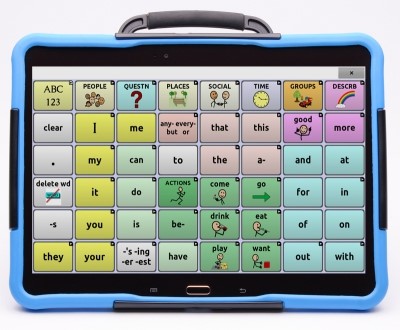Speech Pathologist
Julie Staresinich (x2904)

What does Speech Therapy focus on at ATP?
- Functional communication: teaching students to effectively communicate
their wants and needs through verbalizations or via AAC (augmentative and alternative communication) including low-tech picture based systems and verbal output communication devices (Nova Chat, IPads with communication apps on them, etc.). - Social communication: Help students develop their social skills to better connect with others and to be able to effectively function in society. Appropriately relating to others is essential for success in academics and at work.
Non-verbal communication skills include: appropriate eye contact, social proximity, interpreting body language and facial expressions, and reading social cues.
Social verbal communication skills include: using appropriate greetings and closings, initiating and maintaining conversation while staying on topic, making requests, making social inferences, perspective taking (inferring others thoughts and feelings), problem solving, and understanding non-literal language (indirect requests, idioms, sarcasm etc).
Teaching social skills in various environments such as how to ask for help in a store, how to order in a restaurant, how to have an appropriate conversation with various listeners and how to have a successful interview are some of the many examples of social skills that our students learn.
- Other areas targeted in speech therapy include: articulation, fluency, voice, receptive and expressive language, vocabulary, reading, and writing.
Who receives speech therapy?
- Services are determined based on the above speech and language deficits.
- Students who are deemed eligible for speech therapy and have services written on their
IEP
- Students who are in the classroom when the speech pathologist and social worker lead
social group activities
How is speech therapy provided?
Individual, Small group Community Outings
In the classroom Work environments